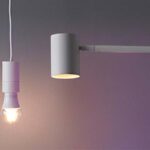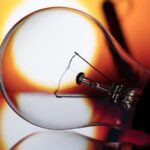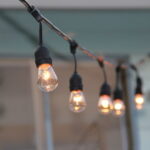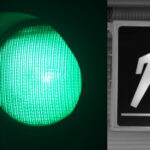Do LED Lights Cause Cancer: Basic Guidelines
There are some startling claims about LED lights, the latest and most efficient of lighting technologies. Fear is brought on by incorrect interpretation of this research. Do LED lights cause cancer?
There are no studies with conclusive evidence to support a causal relationship that exposure to any of these will cause cancer. LEDs produce only visible light and heat.
Please read on for more detailed information.
Table of Contents
LED Lighting’s Biggest Concern
The potential consequences of blue light—not ultraviolet—emitted by LEDs are the main cause for concern. White LEDs are actually blue LEDs that have a yellow phosphor coating. Compared to the blue portion of sunlight, the blue light emitted by these tiny devices is much less powerful. Exposure to sunlight might be fatal if LED lighting is as dangerous as claimed.
Cells that are sensitive to light and color make up the retina, which provides vision. The retina contains blue-sensitive cells that are less important for vision and that help control the body’s circadian rhythms. These cells essentially only pick up blue light, which informs the brain whether it is day or night. This system is impacted and sleep patterns are disturbed by artificial lighting (electric lights) with excessive blue light. It could result in some health issues if this effect lasts for a long time.
Blue light exposure from LED lights, monitors, smartphones, and other technologies during the day should not be a concern. The main issue is exposure to such lighting right before or right after bed.
The answer is quite straightforward, and blue light should be avoided. There are several effective solutions, including turning down the lights at night, putting technology away, and using filters and apps that cut down on blue light.
Compared to cool white LEDs, warm white LED lighting produces less blue light. Since you spend a lot of time in homes in the evening, 2700K color-temperature LED lamps are to be preferred in those spaces.

Can LED Lights Cause Cancer?
We have breathed a sigh of relief since the development of LED lights. There were many factors at play. We believed that the light, which combines efficiency and safety flawlessly, is now available. The joy of eliminating the harmful mercury element found in CFLs, as well as their poor efficiency and short lifespan, now seems to be waning.
This subject is currently the focus of intense conversation. And now, scientists have come to the conclusion that LED lights have a negative side as well. A strong correlation exists between cancer risk and the blue light that LED lights emit. The study conducted by Britain’s Exeter University is claiming that the “blue light” of The potential for prostate and breast cancer from LED streetlights exists. Not only this, but another reputable organization, the Barcelona Institute for Global Health, also claims that exposure to blue LED lights at night can lead to breast and prostate cancer. The Global conducted the study by giving questionnaires to those who had been exposed to nightlights for a longer period of time. Streetlights and other advertising and commercial hoarding lights are the dangerous components of LED lights, according to all the important studies.
Exposure levels of LED lights, such as the effects of streetlights, were assessed in two cities with regard to their effects on outdoor lighting. The study was carried out in Madrid and Barcelona and it was based on the nighttime images taken by astronauts on board the ISS (International Space Station). With only 10 to 100 participants, the survey is not small. Over 4,000 people in the Spanish region provided the epidemiological and medical information for this extensive study. Out of these 4,000 people, ages 20 to 80 from 11 different regions of Spain were represented.
The outcomes are indeed concerning for us all. The findings from these two cities showed that those with higher levels of blue light exposure have a risk of developing breast and prostate cancer that is up to twice as high as those with lower levels of exposure.
Additionally, the World Health Organization’s IARC, or International Agency for Research on Cancer, came to the conclusion that night shift work was probably cancer-causing for people. A strong body of research links disruption of the circadian rhythm caused by artificial light exposure at night to breast and prostate cancers.
Cancer-Causing Agents and Incandescent Bulbs
Nowadays, cancer and other related human health problems are brought on by energy-saving light bulbs. Ten years ago, this phenomenon was found. Scientists advised against continuously and for an extended period of time exposing oneself to any LED lights. The head should not be exposed to too much light because energy-saving lamps contain poisonous chemicals, so people should avoid sitting or working near them.
Experts advise against keeping any energy-saving lights close to babies and young children. Because they penetrate an infant’s body more quickly than an adult’s, this is the explanation. Adults are not immune to these dangers, though. Because of the chemicals they contain, prolonged exposure to these lights could have a negative impact on one’s health.
Of course, incandescent bulbs are not among those that conserve energy. Instead, they carry a unique set of health risks. Because incandescent bulbs are free of mercury and other harmful substances, they are not dangerous. However, they use a lot of energy and produce more airborne chemicals, which can have a serious negative impact on people’s health. Additionally, we are already aware of how inefficient incandescent lights are. Of course, they are inexpensive compared to other options. However, as soon as you start using them, the problems begin and the life of these bulbs is very short. You are forced to change the bulbs frequently because of this. Another issue with this type of bulb is that it breaks much more frequently than more recent bulbs like CFLs and LEDs.

Fluorescent Bulbs in Relation to Cancer
Fluorescent lights emit ultraviolet rays that are known to cause cancer, but they also contain mercury, which has been linked to a number of other health problems, including headaches, fatigue, and vertigo. Furthermore, current research indicates that prolonged exposure to fluorescent lighting may cause an increase in the hormone cortisol. The body may store an excessive amount of belly fat when this hormone is released into the body, among other things. Due to this, scientists have discovered a link between fluorescent lighting and colorectal cancer.
Read about
Lights, the Environment, and Cancer
More than we might imagine exists in the relationship between light, cancer, and the environment. As we’ve already seen, both CFLs and LEDs can lead to cancer. But how do these kinds of bulbs affect the environment? Let’s find it right now.
Incandescent
These bulbs are now viewed as an outdated method. You won’t gain much from this, aside from the low investment. The disadvantages outweigh the benefits. They do not help, either, from an ecological standpoint. Due to the fact that they need a lot more energy to produce heat than light, they require a lot of energy to produce a decent amount of light. The use of incandescent lighting generates excessive heat during this process, which releases a number of chemicals. They not only consume and waste a lot of energy, but they also produce a lot of carbon dioxide. In addition, the extra heat they produce makes it harder for air-cooling systems like air conditioners to operate. More AC use results in greenhouse gas emissions and additional issues. They are safe, however, with regard to substances that cause cancer.
Cfl
CFLs use less energy than incandescent lights. The poisonous element mercury is present in them, though. In addition to posing a threat to human life, mercury also poses a threat to other species of life as well as the environment as a whole. Up to 30% of the mercury vapor in CFLs is released into the air during the initial stage of operation. When they stop working, it further complicates the issue and harms the environment. Eventually, the mercury from the discarded CFLs travels to the watercourse after they have reached landfills and started to emit it. The water becomes contaminated as a result, endangering marine life. It goes without saying that they cause cancer due to the mercury and UV light. UV rays have been linked to both skin cancer and accelerated skin aging.
LED
The CFL is the superior option compared to the others from an environmental standpoint. However, they also release greenhouse gases while creating light. In contrast to incandescent and CFL lighting, they are, however, much less. But it appears that the biggest danger is to one’s health. According to studies, LEDs, particularly those that emit blue light, are hazardous and can lead to breast and prostate cancer.
The CFL bulb is the best option from an environmental point of view because of how little greenhouse gas it emits. Mercury is absent, and there is hardly any carbon dioxide emission.
Conclusion
More than any other type of lighting source, LED lights are an innovation that is greatly assisting. As a result, LED lighting is commonly used in all spheres of life. LED usage is evident in everything from remote controls to floodlights. When compared to the alternatives, LED actually offers the best option for us and has a very low impact on the environment. However, it also carries some risks; using blue LED lights increases your chance of developing cancer. To reach this conclusion, the facts must be thoroughly examined in more extensive studies. Whatever the outcome, it’s important to live a healthy lifestyle, take regular breaks, and limit how long you use something.




![9 Best Boat Dock Lighting Ideas In 2022 [Updated]](https://www.totallylight.com/wp-content/uploads/2022/09/9-Best-Boat-Dock-Lighting-Ideas-In-2022-Updated-150x150.jpg)
















